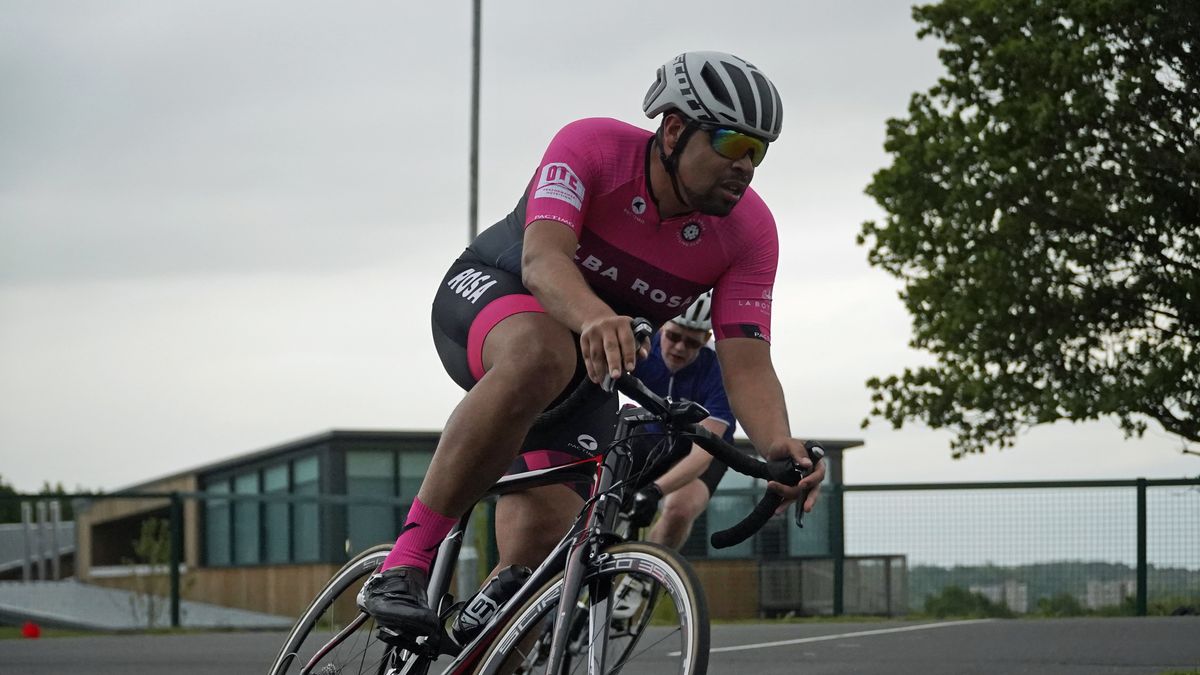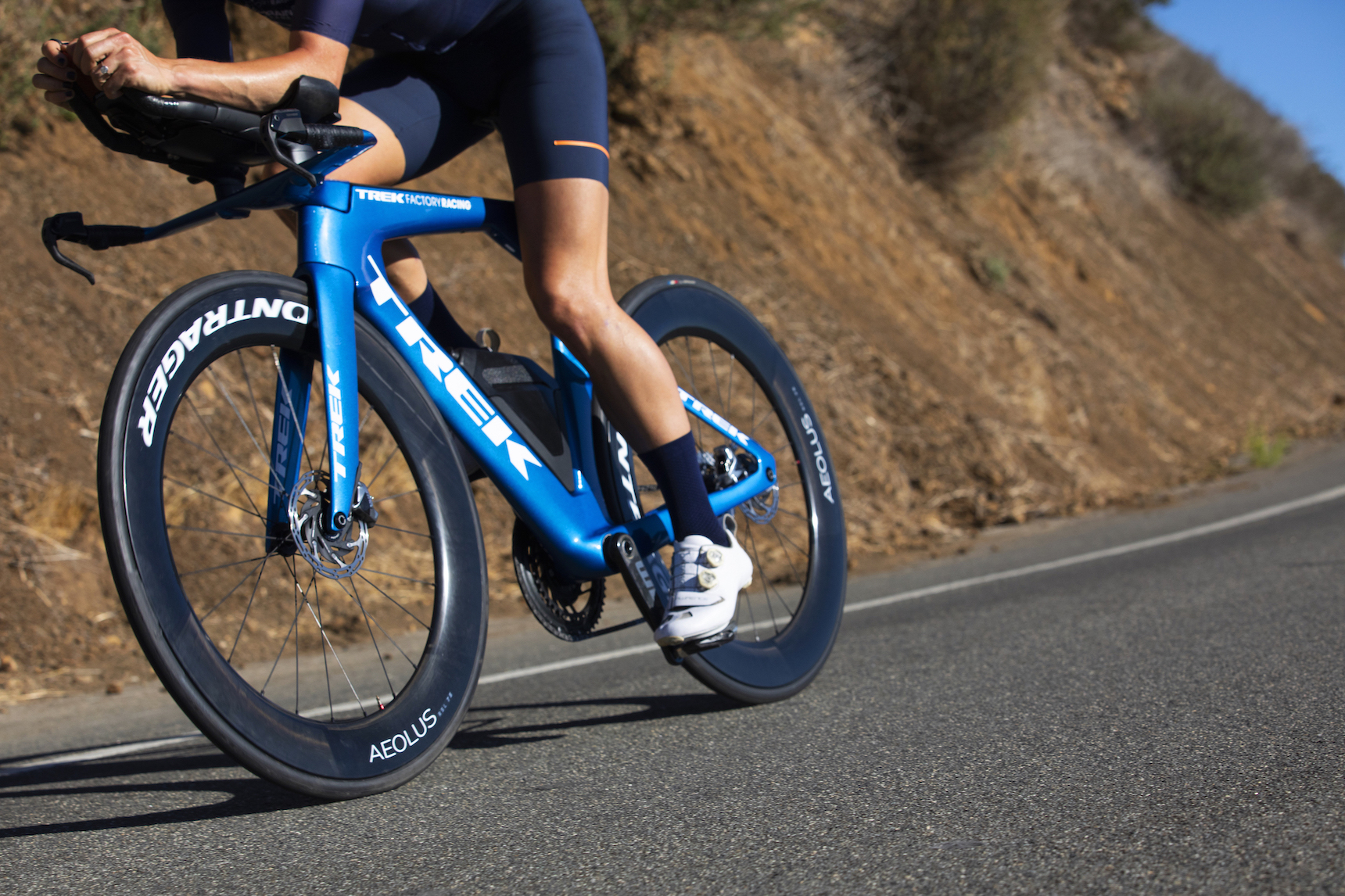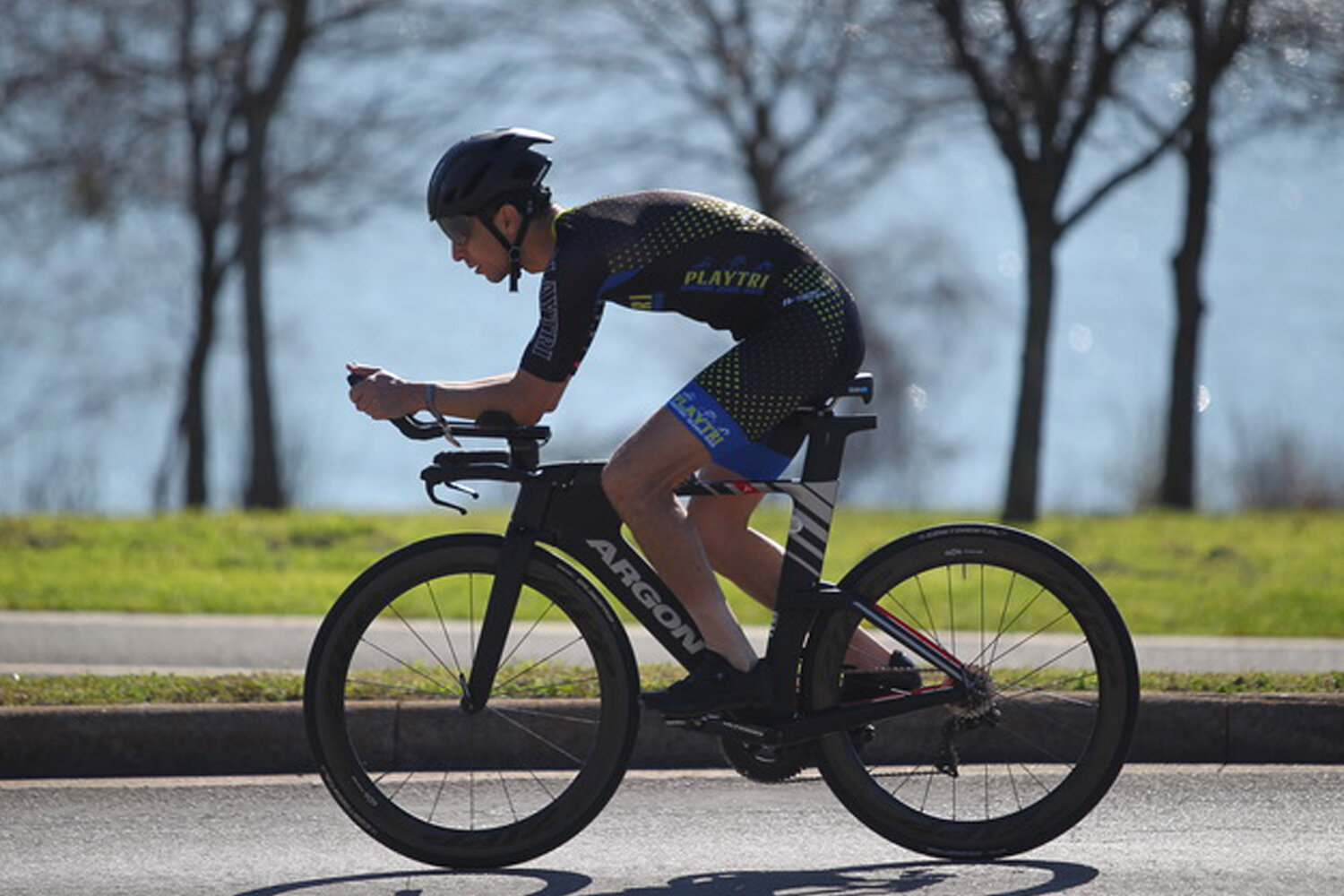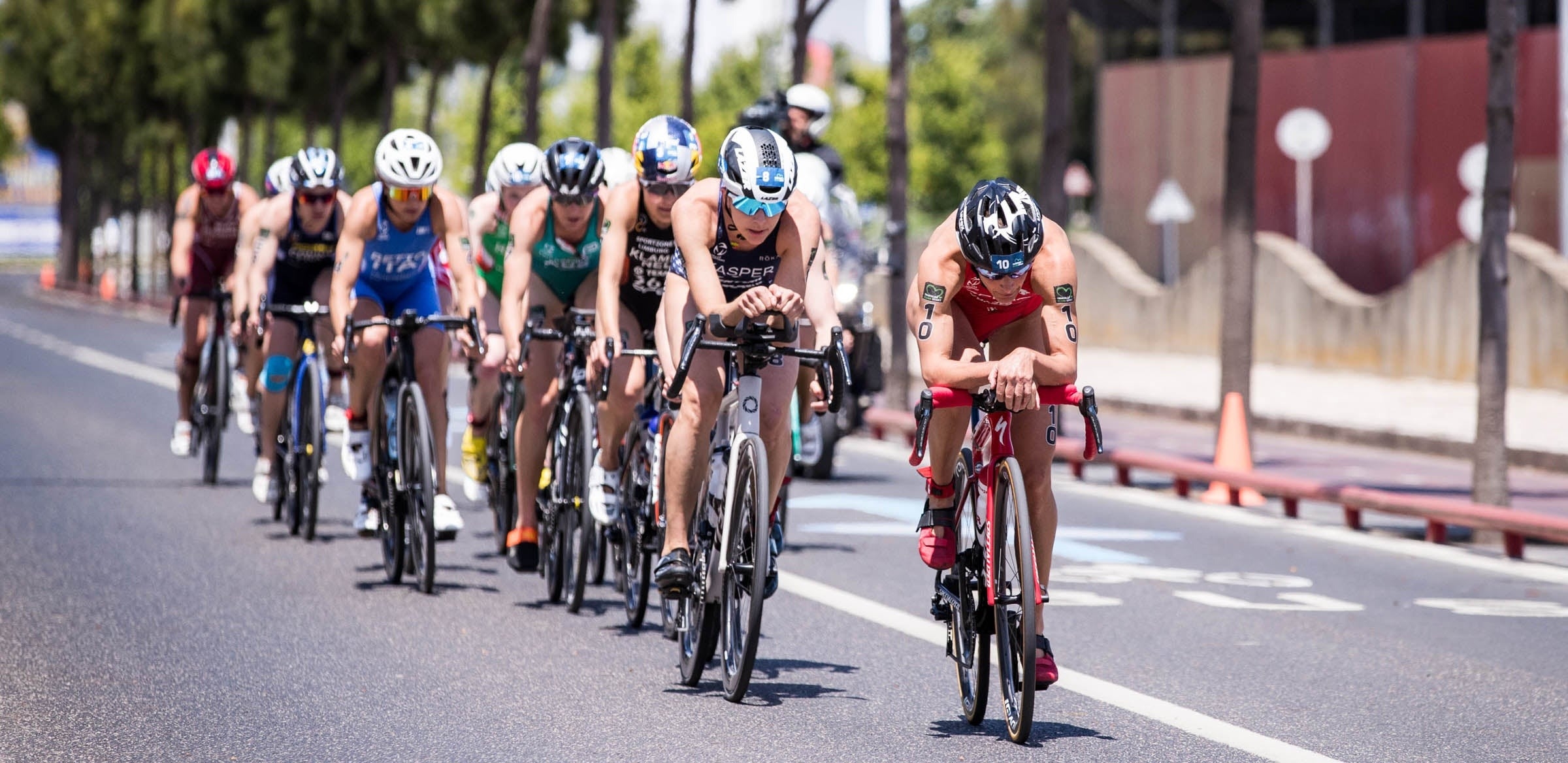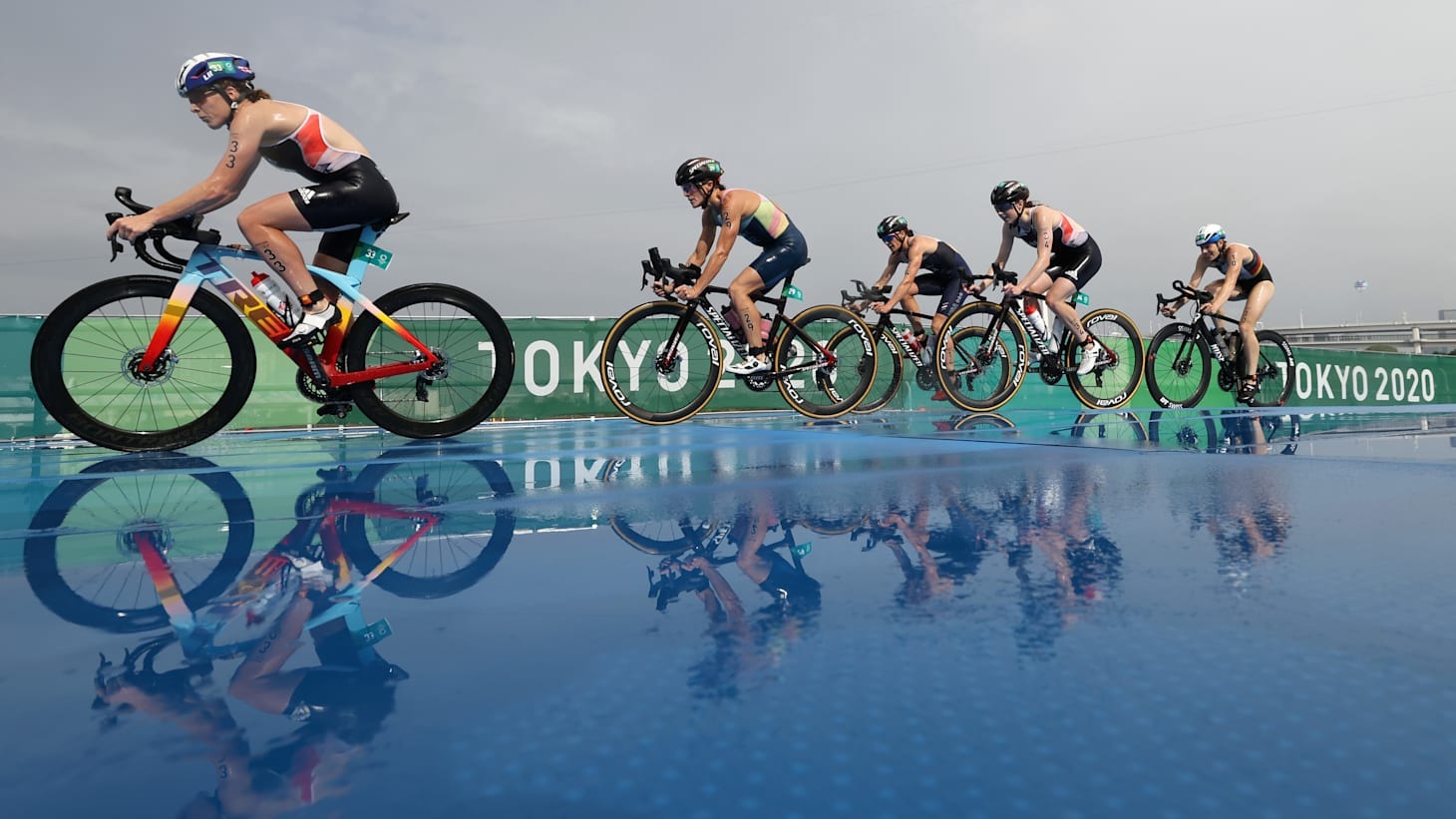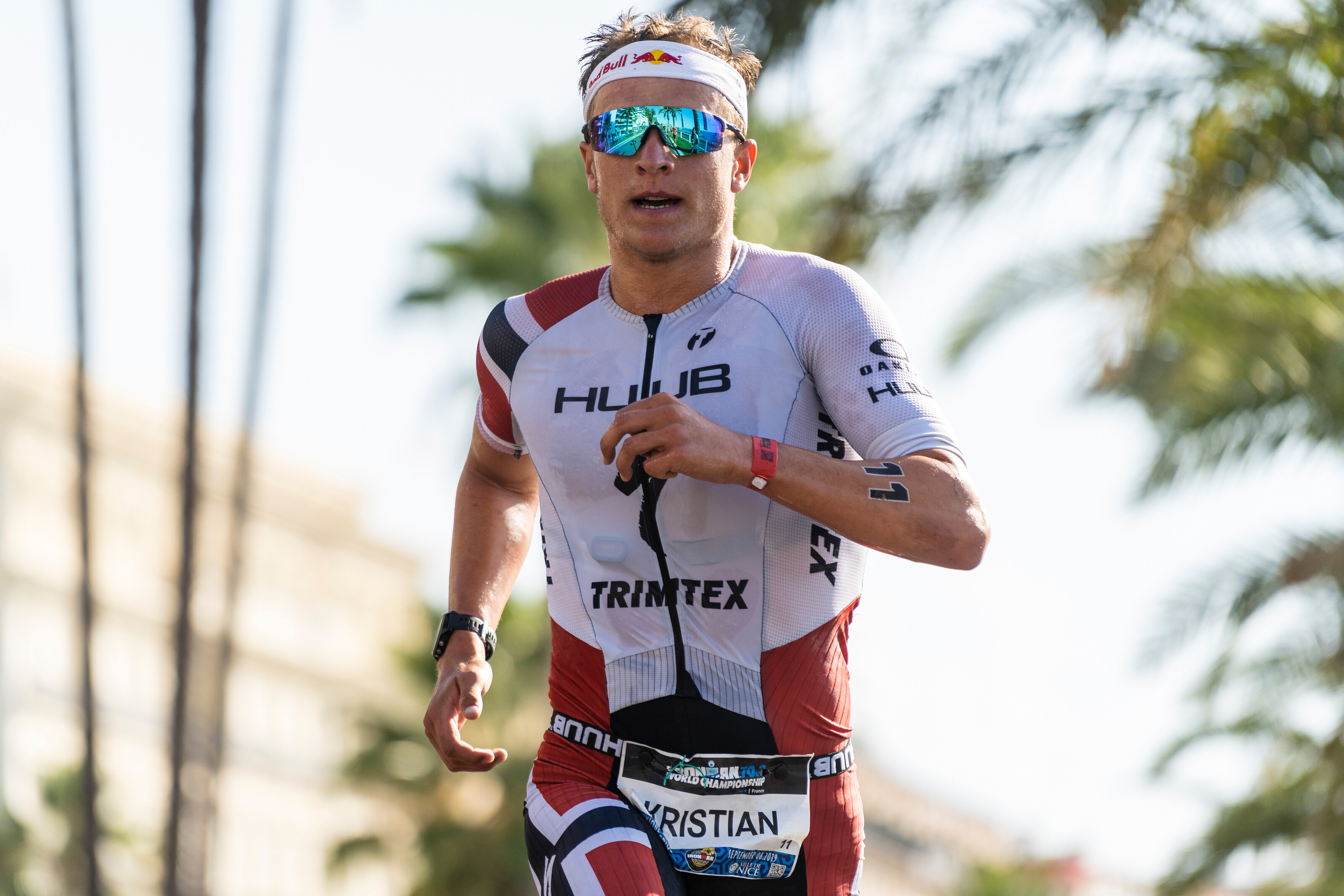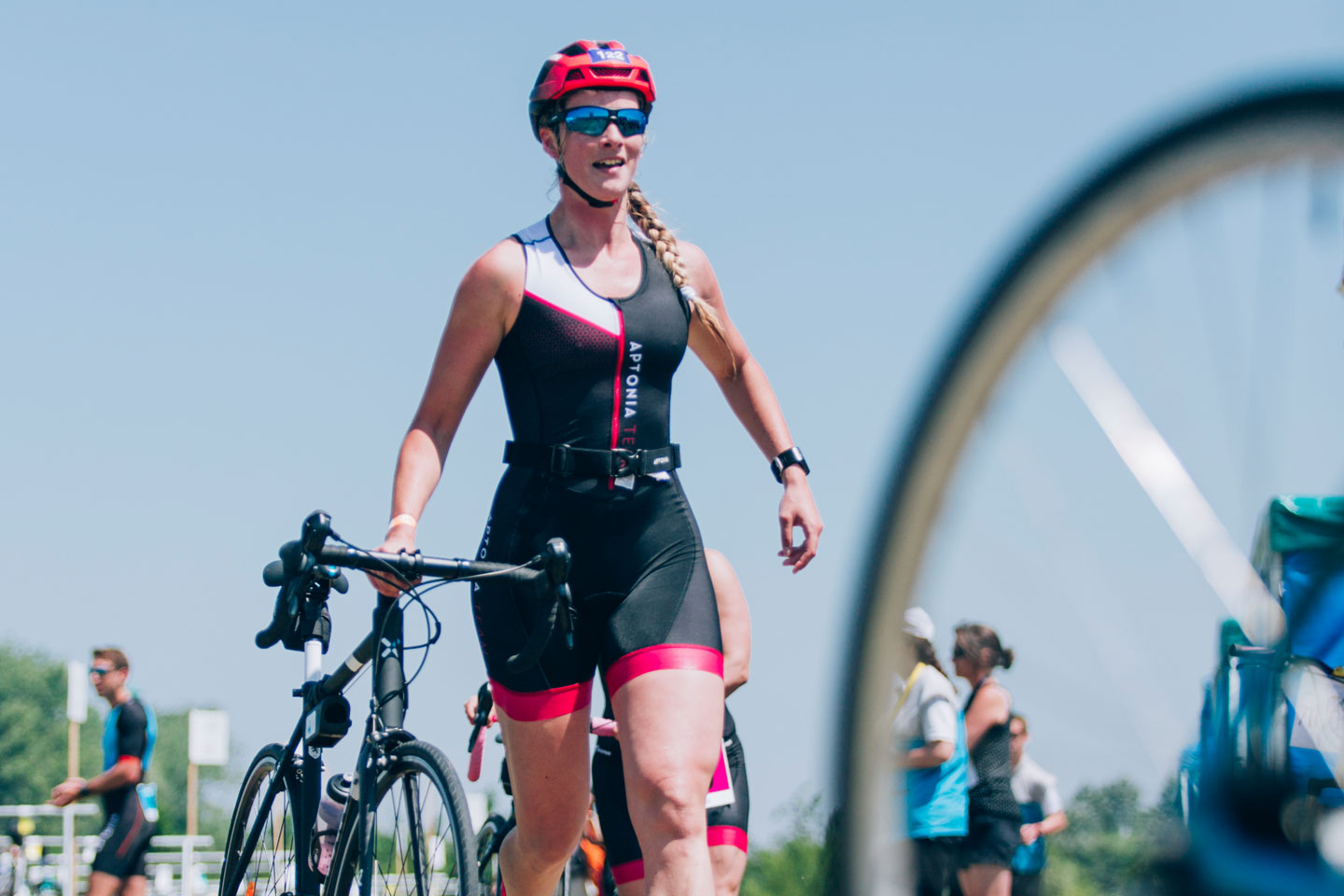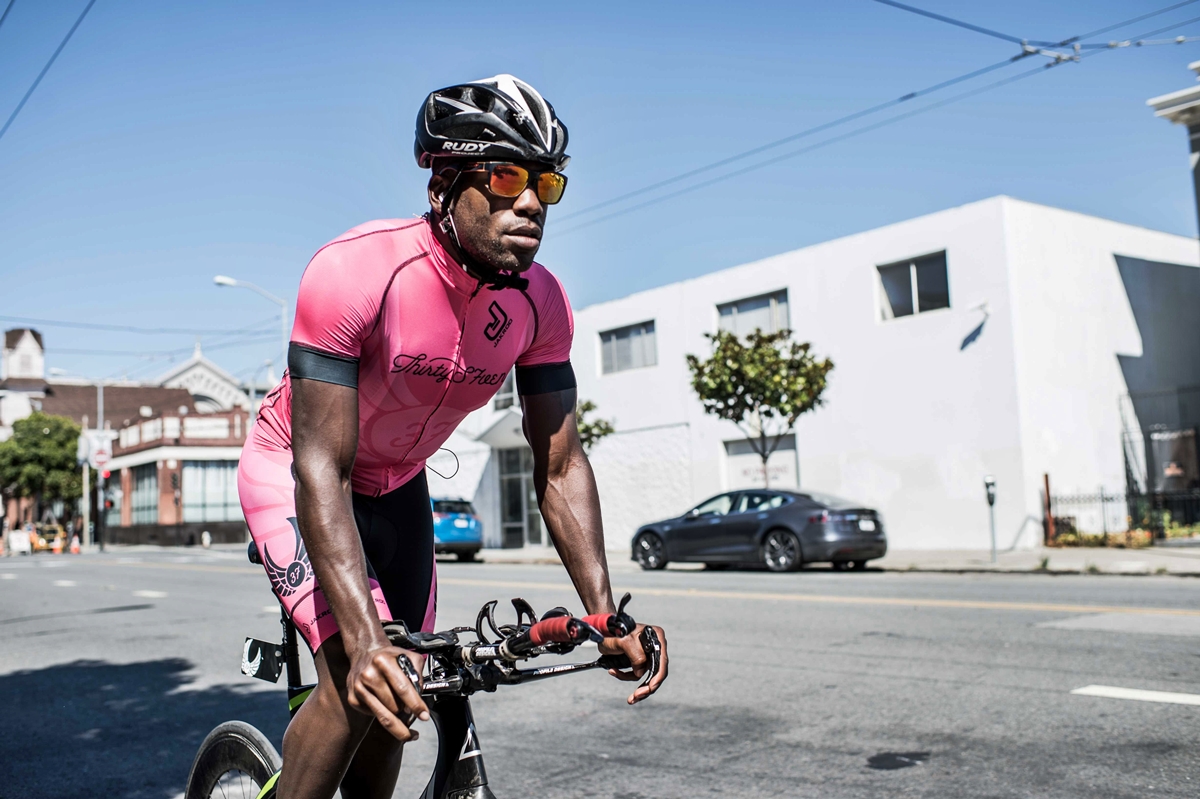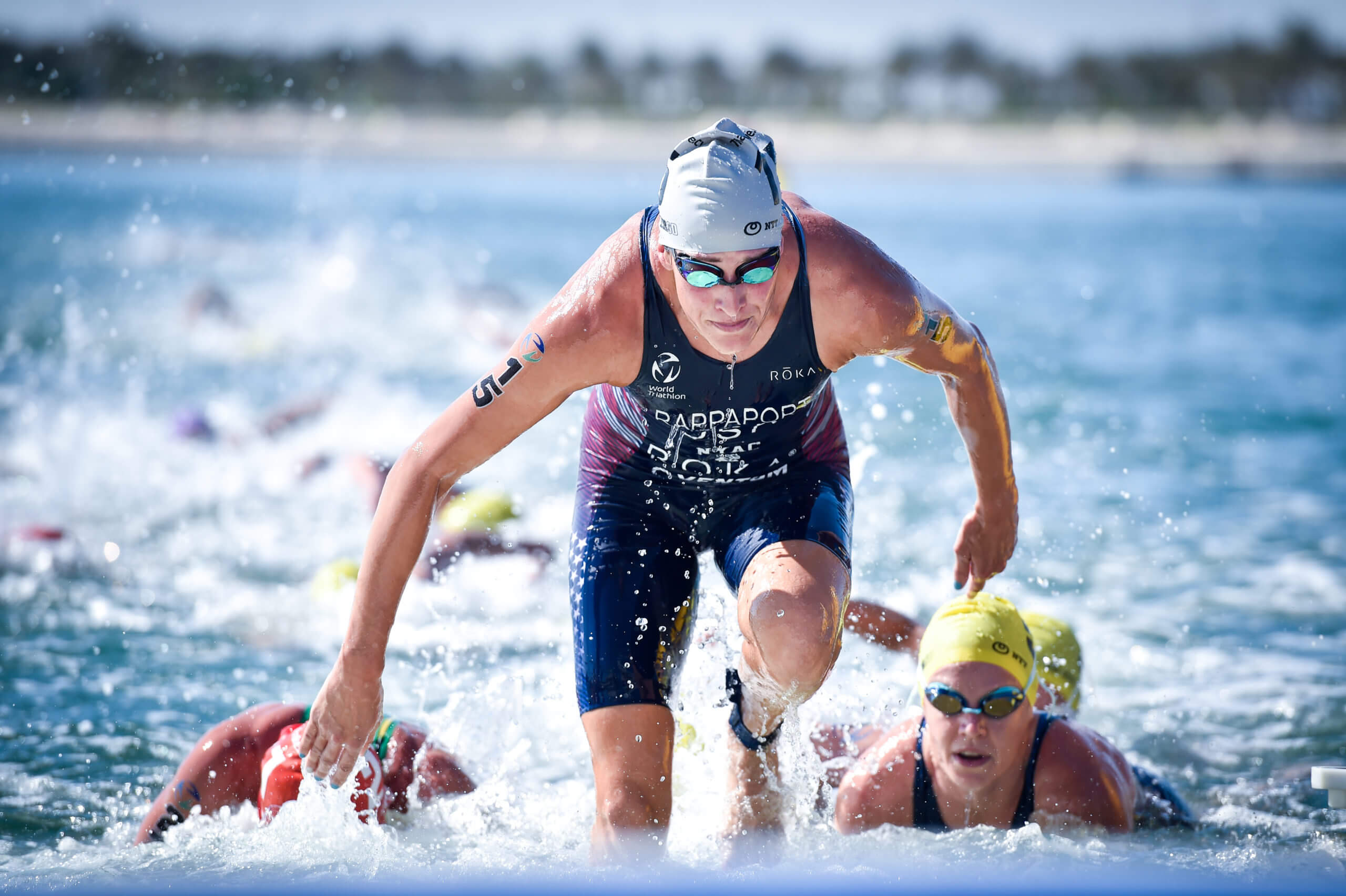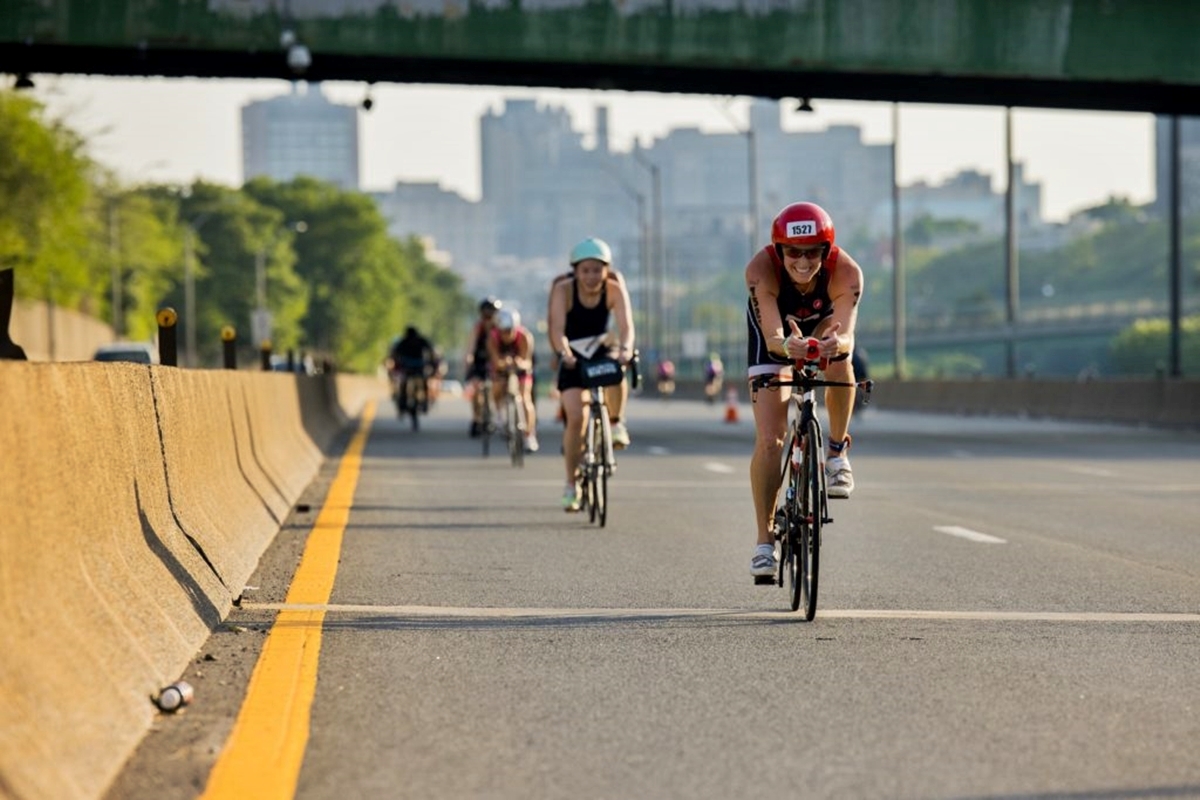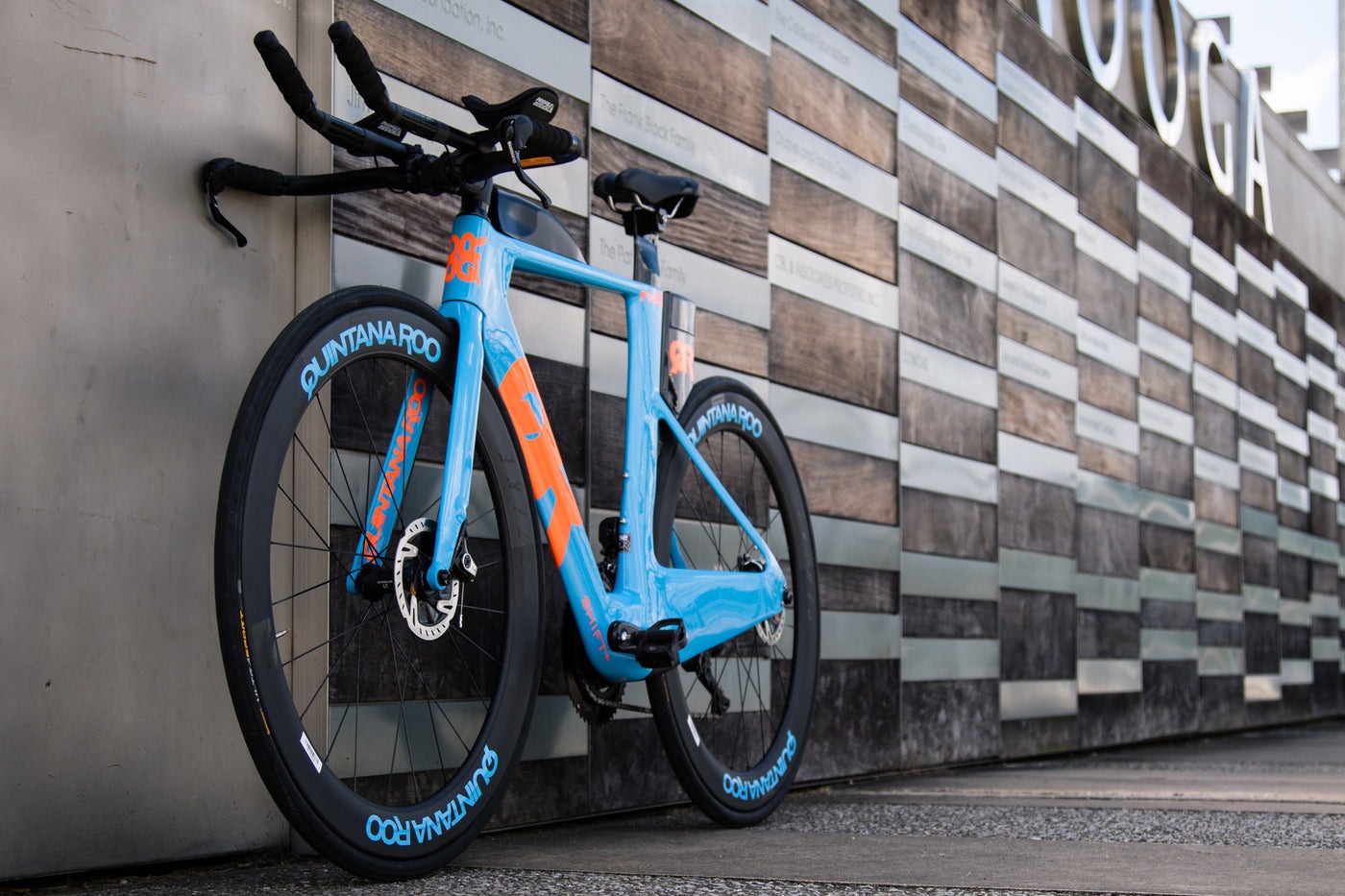

Featured
What Kind Of Bike Is For Triathlon
Modified: January 2, 2024
Find the perfect bike for your triathlon with our featured selection. Discover the best bikes for speed, efficiency, and performance.
Introduction
Triathlons are exhilarating and challenging athletic events that combine three disciplines: swimming, cycling, and running. Among the three, the cycling portion plays a significant role in determining a competitor’s overall performance. To excel in this leg of the race, athletes need a specialized bike that is designed for triathlon events.
In this article, we will explore the different types of bikes available for triathlons and provide you with valuable insights to help you choose the right one for your needs. Whether you are a beginner, intermediate, or advanced triathlete, having the appropriate bike can give you a competitive edge and enhance your overall race experience.
While any bike can be used in a triathlon, ranging from mountain bikes to road bikes, there are specific features and designs that set triathlon bikes apart. These specialized bikes are tailored to meet the unique demands of triathlon races, offering aerodynamic benefits, efficient power transfer, and optimal body positioning for speed and comfort.
In the following sections, we will delve deeper into the differences between road bikes and time trial (TT) bikes, the two main types of bikes used in triathlons. We will also discuss the various factors to consider when selecting a bike and share tips on bike fit, training, and maintenance to help you get the most out of your triathlon bike.
Whether you are aiming to complete your first triathlon or you are a seasoned triathlete looking to upgrade your bike, this guide will provide you with the knowledge and insights necessary to make an informed decision. So, let’s get started and find out which bike is best suited for your triathlon goals!
Understanding the Basics of Triathlon Bikes
Triathlon bikes, also known as tri bikes, are specifically designed to optimize performance and efficiency during the cycling portion of a triathlon. Unlike traditional road bikes, tri bikes are engineered with aerodynamics as the top priority. This means that every aspect of the bike, from the frame geometry to the handlebars, is designed to minimize wind resistance and maximize speed.
One of the defining features of a tri bike is the aerodynamic frame. These frames are typically lightweight and made from materials such as carbon fiber to combine strength and rigidity. The shape of the frame is contoured and shaped to reduce drag, with features like a sloping top tube and aero profiles.
Another key component of a triathlon bike is the handlebars. Tri bikes often come with specialized handlebars called aerobars or tri-bars. These handlebars allow the rider to maintain a more aerodynamic position by resting their forearms on pads and gripping the bars in a “time trial” position. This helps to reduce wind resistance and increase speed.
The geometry of a triathlon bike is also different from a traditional road bike. Tri bikes have a steeper seat tube angle, which puts the rider in a more forward position. This opens up the hip angle and allows for better power transfer from the legs to the pedals. The handlebars are positioned lower to the ground, enabling the rider to get into a more streamlined and aerodynamic position.
In addition to the aerodynamic design, triathlon bikes often feature specific components to enhance performance. These may include deep-section aero wheels, integrated hydration systems, and even storage compartments for nutrition and tools. These features allow triathletes to have everything they need within easy reach without sacrificing aerodynamics.
It is important to note that while triathlon bikes excel in speed and aerodynamics, they may not provide the same level of comfort as traditional road bikes. The aggressive positioning and firm ride of a tri bike may not be suitable for all riders, especially those who prioritize long-distance comfort over pure speed.
Now that you have an understanding of the basics of triathlon bikes, let’s dive deeper into the different types of bikes commonly used in triathlons: road bikes and time trial (TT) bikes.
Road Bikes for Triathlon
Road bikes are a popular choice for triathletes, especially for beginners and those participating in shorter distance triathlons. These bikes are versatile and can be used for both training and racing. While not specifically designed for triathlons, road bikes can still be an excellent option depending on your goals and preferences.
One of the advantages of using a road bike for triathlon is its versatility. Road bikes are designed to handle various types of terrain, making them suitable for both training rides on hilly roads and flat race courses. If you are someone who enjoys cycling outside of triathlon events, a road bike can be a convenient option as it can be used for both recreational rides and competitive races.
Another benefit of road bikes is their comfort. Compared to the more aggressive and aerodynamic positioning of triathlon bikes, road bikes offer a more relaxed and upright riding position. This can be advantageous for longer-distance triathlons where comfort becomes a significant factor. The more comfortable riding position helps reduce fatigue and allows you to maintain a steady pace throughout the race.
Additionally, road bikes often come equipped with a wider range of gears, which can be useful for managing the varied terrain encountered in many triathlon courses. Having a wide gear range allows you to adjust the resistance and find the optimal cadence for different sections of the race, whether it’s climbing a hill or sprinting to the finish line.
However, it’s important to note that road bikes may not provide the same level of aerodynamic advantage as triathlon-specific bikes. The frame geometry and handlebars of road bikes are optimized for comfort and handling, rather than minimizing wind resistance. If you are aiming for maximum speed and efficiency, especially in long-distance or competitive triathlons, a dedicated triathlon bike might be a better choice.
In summary, road bikes are a versatile option for triathletes, especially beginners and those participating in short to medium-distance races. They provide a comfortable riding position, a wide gear range, and can be used for both training and racing. However, if your focus is on achieving maximum speed and aerodynamics, you may want to consider investing in a dedicated triathlon bike.
Time Trial (TT) Bikes for Triathlon
Time trial (TT) bikes, also known as triathlon bikes, are specifically designed for triathlon events where speed and aerodynamics play a crucial role. These bikes are engineered to minimize wind resistance and maximize efficiency, making them the go-to choice for serious triathletes aiming to optimize their performance.
One of the key features of TT bikes is their aerodynamic frame design. These frames often have a unique shape that minimizes drag by reducing turbulence caused by wind. Most notably, TT bikes have a sloping top tube and a closer wheelbase, which allows the air to flow smoothly around the bike and the rider. The frame materials used in TT bikes are also carefully chosen to strike a balance between strength, rigidity, and weight, with carbon fiber being a popular choice.
The most distinctive feature of a TT bike is its handlebars. Triathlon-specific handlebars, also known as aerobars or tri-bars, allow the rider to adopt a forward-leaning position, similar to a time trial cyclist. By resting their forearms on the pads and gripping the bars in a “time trial” position, the rider can minimize their frontal profile and reduce wind resistance, leading to improved speed and efficiency.
The geometry of a TT bike is also designed for optimal aerodynamics. These bikes typically have a steeper seat tube angle, pushing the rider forward to create a more aggressive position. The handlebars are positioned lower to the ground, allowing the rider to get into a more streamlined and aerodynamic stance. This aggressive positioning may take some time to adjust to, but it ultimately allows for efficient power transfer and optimal performance.
In addition to the aerodynamic features, TT bikes often come equipped with deep-section aero wheels. These wheels have a taller rim profile, which further improves aerodynamics by reducing drag. The integrated hydration systems and storage compartments found on TT bikes ensure that triathletes have easy access to fluids, nutrition, and tools without compromising their aerodynamic advantage.
It’s important to note that TT bikes are designed for speed and efficiency, rather than comfort. The aggressive positioning and stiffer ride of a TT bike may be less forgiving on longer rides or for those who prioritize comfort over pure speed. Additionally, the handling of TT bikes may require some getting used to compared to traditional road bikes.
In summary, TT bikes are the preferred choice for serious triathletes looking to optimize their speed and efficiency during the cycling leg. These bikes excel in the aerodynamic design, featuring unique frame geometries, specialized handlebars, and deep-section aero wheels. However, it’s crucial to consider factors such as comfort, handling, and personal preferences before investing in a TT bike.
Choosing the Right Bike for Your Triathlon Goals
When it comes to selecting the right bike for your triathlon goals, there are several factors to consider. Whether you are a beginner, intermediate, or advanced triathlete, choosing the right bike can significantly impact your performance and overall race experience. Here are some essential considerations to keep in mind:
- Distance and Terrain: Consider the distance of your triathlon race and the type of terrain you will be encountering. If you are participating in shorter distance triathlons with relatively flat courses, a road bike can be a suitable option. However, if you are aiming for longer-distance races with varied terrain, such as hills or technical courses, a time trial (TT) bike might provide a performance advantage.
- Experience and Skill Level: Your experience level as a triathlete can also influence your bike choice. Beginners may find road bikes more comfortable and manageable, while advanced triathletes looking to maximize speed may opt for triathlon-specific TT bikes.
- Budget: Setting a budget is crucial when considering a new bike. Take into account the cost of the bike itself along with any necessary accessories. It’s essential to strike a balance between your budgetary constraints and the features and performance you desire.
- Comfort: Comfort is a vital consideration, especially for longer races. Triathlon-specific bikes like TT bikes prioritize aerodynamics over comfort, while road bikes offer a more relaxed riding position. Consider your personal preferences and any potential comfort issues before making your final decision.
- Bike Fit: Optimal bike fit is crucial for both performance and injury prevention. Consider getting a professional bike fit to ensure that your chosen bike is properly adjusted to your body measurements, allowing for efficient power transfer and minimizing discomfort or strain during your rides.
- Test Rides and Research: Take the time to test ride different bike models and do thorough research before making your decision. Visit local bike shops, read reviews, and talk to experienced triathletes or bike experts to gather insights and make an informed choice.
Ultimately, choosing the right bike for your triathlon goals involves considering your specific needs, preferences, and budget. It’s important to find a bike that aligns with your skill level, comfort requirements, and the type of triathlon races you plan to participate in. Whether you choose a road bike or a time trial (TT) bike, make sure it suits your individual needs and allows you to perform at your best on race day.
Factors to Consider When Buying a Triathlon Bike
When buying a triathlon bike, there are several key factors to consider to ensure you make the right choice. Your triathlon bike will be a significant investment, so it’s essential to assess these factors carefully before making your purchase. Here are some considerations to keep in mind:
- Budget: Determine your budget range and look for bikes that fall within that range. Remember to factor in any additional costs for accessories or bike fittings.
- Frame Material: Triathlon bikes are typically made from carbon fiber, aluminum, or a combination of both. Carbon fiber frames are lightweight and provide optimal strength and stiffness, but they tend to be more expensive. Aluminum frames are more affordable but may be slightly heavier.
- Frame Geometry: Consider the frame geometry that suits your body proportions and riding style. Triathlon bikes typically have a steeper seat tube angle and a more aggressive riding position to optimize aerodynamics. It’s important to find a bike that fits you well and allows for efficient power transfer.
- Components: Pay attention to the components (groupset and drivetrain) of the triathlon bike. Look for high-quality components from reputable brands, as they will have a direct impact on your bike’s performance and durability. Consider factors such as gear ratios, shifting precision, and braking efficiency.
- Wheels: Consider the type of wheels that come with the triathlon bike. Deep-section aero wheels offer better aerodynamics but may be heavier and less stable in crosswinds. Lighter and more versatile wheels may be preferred for hilly or technical courses.
- Bike Fit: Bike fit is crucial for optimal comfort and performance. Consider getting a professional bike fit or ensure that the bike you choose can be adjusted to fit your specific body measurements and riding style.
- Reviews and Recommendations: Read reviews, seek recommendations from experienced triathletes, and consult with bike experts to get insights into specific models and brands. This can help you make an informed decision based on real-world experiences.
- Test Rides: Whenever possible, test ride potential bikes to get a feel for their handling, responsiveness, and overall comfort. Pay attention to the bike’s stability at higher speeds, its maneuverability, and how it feels in different riding positions.
By carefully considering these factors and understanding your personal preferences and needs, you can make an educated decision when buying a triathlon bike. Remember, the right bike for you may not be the most expensive or the one with the most advanced features. Choose a bike that aligns with your goals, fits your body well, and allows you to perform at your best during triathlon races.
Bike Fit and Adjustments for Optimal Performance
Ensuring that your triathlon bike is properly fitted to your body is crucial for both performance and comfort during training and races. A bike that is not properly adjusted can lead to discomfort, inefficient power transfer, and even injuries. Here are some key aspects of bike fit and adjustments to consider for optimal performance:
- Saddle Height: The height of your saddle is critical as it affects your pedaling efficiency and power output. The general rule of thumb is to set the saddle height so that your leg is almost fully extended at the bottom of the pedal stroke, with a slight bend in the knee.
- Saddle Position: The fore/aft position of the saddle determines your balance on the bike and can affect both power transfer and comfort. Making small adjustments to the saddle position can help find the optimal position that balances power and comfort.
- Handlebar Height and Reach: The handlebar height and reach impact your riding comfort and aerodynamics. Depending on your flexibility and riding preferences, you may need to adjust the stem length, handlebar height, or the position of the aerobar pads to find the best balance between comfort and aerodynamics.
- Aerobar Positioning: The position of the aerobar pads and extensions is critical for your aerodynamic efficiency. It’s essential to fine-tune the extension length, pad width, and angle to ensure a comfortable and aerodynamic position without excessive strain on your neck, shoulders, and back.
- Cleat Position: Proper cleat alignment and position can improve pedaling efficiency and reduce the risk of injuries. Ensure that your cleats are aligned correctly and positioned in a way that your feet and knees are properly aligned during pedaling.
- Brake and Shift Lever Position: Adjusting the position of brake levers and shifters is important to ensure easy access and comfortable hand placement. Proper lever positioning can improve your control and maneuverability on the bike.
- Overall Comfort: Pay attention to your overall comfort on the bike. Adjustments such as adding padding to the saddle, using padded handlebar tape, or utilizing gel inserts can help improve your comfort, especially during longer rides.
It’s worth noting that professional bike fitting services can be incredibly beneficial if you’re unsure about making these adjustments yourself. A professional bike fitter can assess your body mechanics, riding style, and goals to ensure an optimized bike fit that suits your unique needs.
Regularly reassess your bike fit as your fitness level and body composition may change over time. Additionally, make necessary adjustments as you become more experienced and gain a better understanding of your riding preferences. Remember, a properly fitted bike can enhance your performance, improve your efficiency, and minimize the risk of injury during training and triathlon events.
Tips for Training and Racing with a Triathlon Bike
Training and racing with a triathlon bike require a slightly different approach compared to other bikes. Here are some valuable tips to help you maximize your performance and get the most out of your triathlon bike:
- Practice Your Aero Position: The aero position on a triathlon bike is crucial for reducing wind resistance and enhancing speed. Practice spending time in this position during training rides to develop comfort and efficiency.
- Interval Training: Incorporate interval training sessions into your training plan to improve your speed, power, and endurance. Focus on efforts that mimic the demands of the race, including short bursts of high-intensity efforts followed by periods of recovery.
- Hill Training: If your triathlon includes hilly sections, incorporate hill training into your workouts. This will help improve your climbing ability and prepare you for the demands of uphill sections during the race.
- Master Gear Shifting: Become proficient in shifting gears smoothly and efficiently, especially during transitions from the swim to bike and bike to run. Practice shifting under different conditions to ensure quick and precise gear changes.
- Train in Various Conditions: Get accustomed to riding your triathlon bike in different weather conditions, including wind, rain, or heat. This will help you develop the skills and confidence necessary to perform well regardless of external factors.
- Brick Workouts: Incorporate brick workouts into your training routine, which involve transitioning from the bike to the run immediately. This will help your body adjust to the feeling of running after cycling and improve your ability to perform well during the race’s run leg.
- Pacing and Nutrition: Practice pacing yourself during longer training rides to ensure you have enough energy to complete the bike leg and transition to the run. Experiment with different nutrition strategies to find what works best for you during training, so you can optimize your fueling strategy on race day.
- Recovery: Allow for proper rest and recovery between training sessions and after races to avoid overtraining and reduce the risk of injuries. Adequate recovery is essential for maintaining performance and preventing burnout.
- Race-Specific Training: Familiarize yourself with the racecourse whenever possible and incorporate race-specific workouts into your training routine. This will help you adapt to the specific demands of the race and fine-tune your strategy accordingly.
Remember, consistency in training, proper technique, and adapting to race-specific conditions are key to performing well with your triathlon bike. Take the time to practice and refine your skills to ensure you are comfortable and confident on race day.
Maintaining and Caring for Your Triathlon Bike
Maintaining your triathlon bike is essential for keeping it in optimal condition and ensuring its longevity. Regular care and attention will not only extend the life of your bike but also contribute to its performance during training and races. Here are some important tips for maintaining and caring for your triathlon bike:
- Clean Your Bike: Regularly clean your bike to remove dirt, grime, and debris that can affect performance. Use a gentle bike cleaner and a soft brush or cloth to clean the frame, wheels, drivetrain, and other components. Pay attention to hard-to-reach areas like the cassette and chainrings.
- Lubricate the Chain: Keep your chain properly lubricated to enhance its efficiency and prevent wear. Apply a high-quality bike chain lubricant to the chain and wipe off any excess oil to avoid attracting dirt and debris.
- Check Tire Pressure: Monitor and maintain proper tire pressure to ensure optimal performance and minimize the risk of punctures. Use a tire pressure gauge to check the pressure regularly, and inflate or deflate the tires as needed.
- Inspect and Adjust Brakes: Regularly inspect and adjust your brake system to ensure it is working effectively and safely. Check brake pad wear, adjust brake cable tension if needed, and make sure the brakes engage and release properly.
- Monitor and Maintain Gears: Keep an eye on your shifters and derailleurs to ensure smooth and precise gear changes. Regularly check the gear indexing and adjust if necessary to prevent skipping or chain slipping.
- Check and Tighten Bolts: Periodically inspect and tighten all bolts on your bike, including those on the stem, handlebars, saddle, and other components. Loose bolts can affect the bike’s stability and safety.
- Protect Your Bike: Use bike protection products such as frame guards or wraps to prevent scratches and damage from transport or storage. Additionally, consider using a bike cover or storing your bike indoors to protect it from the elements.
- Get Regular Servicing: Schedule regular servicing with a professional bike mechanic to ensure that all components are in good working condition. Regular maintenance can address any issues, prolong the life of your bike, and improve its performance.
- Store Properly: When not in use, store your triathlon bike in a clean and dry area. Avoid leaving it exposed to extreme temperatures or direct sunlight. Consider using a bike stand or hanging it to prevent damage from contact with other objects.
By following these maintenance tips and providing regular care for your triathlon bike, you will ensure that it remains in top condition, delivering optimal performance throughout your training and racing. Regular maintenance not only extends the life of your bike but also provides peace of mind knowing that every component is functioning properly and ready for your next triathlon challenge.
Conclusion
In conclusion, choosing the right bike for your triathlon goals is a crucial decision that can greatly impact your performance and overall race experience. Understanding the differences between road bikes and time trial (TT) bikes, as well as considering factors such as budget, comfort, and race distance, will help guide you in making the best choice for your needs. Whether you opt for a versatile road bike or a specialized TT bike, ensuring a proper bike fit and making necessary adjustments is essential for optimal performance and comfort.
Throughout your training and racing journey with a triathlon bike, there are various tips and considerations to keep in mind. Practicing your aero position, incorporating interval and hill training, mastering gear shifting, and focusing on nutrition and pacing strategies will help you maximize your performance. Regular maintenance and care for your bike, including cleaning, lubrication, tire pressure checks, and brake and gear inspections, will ensure that your bike remains in top condition and performs at its best.
Remember, your triathlon bike is not just a piece of equipment, but a tool that can enhance your performance and enjoyment in the sport. By understanding your specific goals, investing in the right bike, and maintaining it properly, you can confidently take on the challenges of triathlon events and strive for personal achievements.
